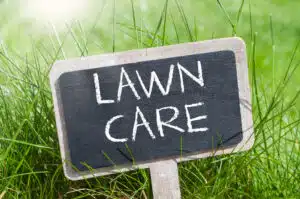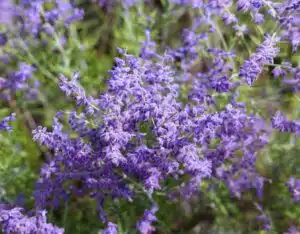Walking into a garden center and facing a wall of fertilizer options can feel overwhelming. With so many bags, boxes, and bottles promising lush lawns, vibrant flowers, and healthy trees, how do you know which one is right for your yard? Choosing the correct fertilizer is one of the most important steps in creating a beautiful and thriving garden.
This garden fertilizer guide will help you understand the essentials. We’ll break down what those numbers on the bag mean, explain the difference between organic and synthetic options, and provide tips on what to use for your specific plants. By the end, you’ll have the confidence to select the perfect fertilizer to help your Layton garden flourish.
Understanding Fertilizer Basics: NPK Explained
Every fertilizer label has three numbers prominently displayed, such as 10-10-10 or 24-8-16. This is the NPK ratio, which represents the percentage of three essential macronutrients your plants need to grow.
- N (Nitrogen): This is the key to lush, green foliage. Nitrogen promotes leaf and stem growth, which is why lawn fertilizers typically have a high first number. If your plants have yellowing leaves or slow, stunted growth, a lack of nitrogen could be the cause.
- P (Phosphorus): Phosphorus is vital for strong root development, flowering, and fruit production. It helps plants establish themselves and produce vibrant blooms. If you want more flowers or a better harvest, look for a fertilizer with a higher middle number.
- K (Potassium): Potassium contributes to the overall health and vigor of a plant. It strengthens plants’ ability to withstand stress from drought, disease, and cold temperatures. Think of it as a multivitamin that boosts a plant’s immune system.
Understanding what each nutrient does is the first step in diagnosing your garden’s needs and choosing the right blend.
Organic vs. Synthetic: What’s the Difference?
Once you understand NPK ratios, the next choice is between organic and synthetic fertilizers. Both have their place in gardening, and the best one depends on your goals and preferences.
Organic fertilizers are made from natural materials like compost, manure, bone meal, and fish emulsion. They release nutrients slowly as microorganisms in the soil break them down. This slow-release process improves soil structure and health over time, reducing the risk of over-fertilizing or “burning” your plants. While they work more gradually, organic options build a healthier soil ecosystem for the long term.
Synthetic fertilizers are manufactured from chemical compounds. They are fast-acting, providing a quick boost of nutrients to plants. This is useful for correcting deficiencies quickly or giving hungry plants like lawns an immediate green-up. However, they don’t improve soil health and can be washed away by rain, potentially contaminating waterways. If you use them, be sure to follow the application instructions carefully.
Fertilizing Different Parts of Your Garden
Your lawn, trees, and flowers have different nutritional requirements. Using a one-size-fits-all product won’t deliver the best results.
Lawn Fertilizer
For a green, dense lawn, nitrogen is the most important nutrient. Look for a fertilizer with a high N value, such as a 24-8-16. Many lawn fertilizers also include weed control (weed and feed) or slow-release nutrients that feed the turf over several months.
Tree and Shrub Fertilizer
Established trees and shrubs generally don’t need as much fertilizer as lawns or flowers. A balanced, slow-release formula like a 10-10-10 is often sufficient. Fertilizing in the early spring helps support new growth. For newly planted trees, a fertilizer higher in phosphorus can encourage strong root development.
Flower and Vegetable Fertilizer
To encourage abundant blooms and a bountiful harvest, phosphorus is key. Choose a fertilizer with a higher middle number, often called a “bloom booster.” Whether you have annuals, perennials, or a vegetable patch, this will help promote flowering and fruiting instead of just leafy growth.
When to Fertilize: Seasonal Timing
Timing is everything. Applying fertilizer when plants can’t use it is a waste of time and money.
- Spring: This is the most important time to fertilize for most plants. As they emerge from dormancy, they need nutrients to support new growth. Fertilize lawns, trees, shrubs, and perennials in early to mid-spring.
- Summer: Fast-growing plants like annual flowers and vegetables may benefit from a mid-summer feeding to keep them productive. For lawns in Utah, it’s best to avoid fertilizing during the hottest part of summer to prevent stress.
- Fall: A fall application on your lawn with a specific “winterizer” formula helps it store nutrients for a quick green-up next spring. Avoid feeding most other plants in the fall, as this can encourage new growth that will be damaged by frost.
Find Your Perfect Garden Fertilizer
Choosing the right fertilizer doesn’t have to be complicated. By understanding NPK values, the difference between organic and synthetic options, and the specific needs of your plants, you can make an informed decision. This knowledge is the foundation of any successful garden fertilizer guide.
If you still have questions, our team at J&J Nursery and Garden Center in Layton is here to help. Stop by, and we’ll guide you to the perfect products to make your garden the envy of the neighborhood. Contact us today for more information!



